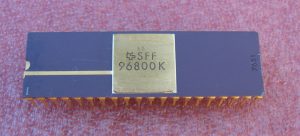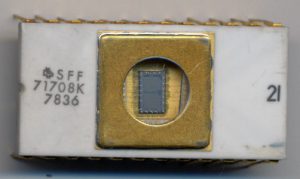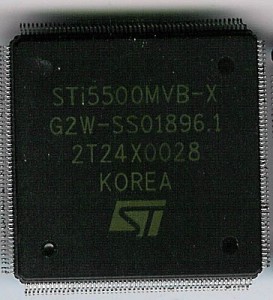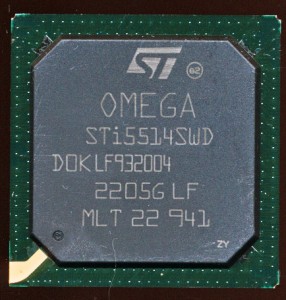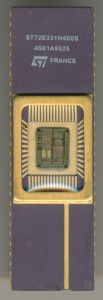SESCOSEM and the French 6800
Sescosem was a French company that was formed during the merger of Thomson-Brandt and CSF in 1968. Thomson-Brandt has its roots as a French subsidiary of GE back in 1892 as Compagnie Française Thomson-Houston (CFTH), while CSF was a French electronics company founded in 1918. Thomson’s SESCO division (itself a joint venture between Thomson and General Electric) was merged with CSF’s COSEM division to form SESCOSEM. SESCOSEM made many semiconductor products for the European market, starting with basic transistors and eventually second-sourcing microprocessors.
SESCOSEM began to work as a second-source for Motorola in September 1976. Somewhat unusually SESCOSEM did not originally manufacture the IC’s they sold. They received completed devices from Motorola, and remarked them as their own. This may sound odd, but it served a purpose, it increased SESCOSEM’s market, and allowed Motorola to more easily sell their devices in Europe. Buying local, to support the domestic industry, was, and continues to be important in Europe, so buying ‘Motorola’ devices, made in the US was less appealing then buying a ‘local’ chip, despite that chip simply being remarked. The agreement called for Motorola to supply
masks and information concerning the 6800 to Thomson-CSF (SESCOSEM parent) for present and future microprocessor products. Eventually SESCOSEM was able to begin making their own devices at their 2 production facilities: Saint-Égrève , near Grenoble (COSEM site) and Aix-en-Provence (SESCO site).
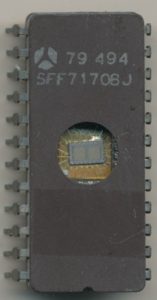
Sescosem SFF71708J – Another 2708 but made in late 1979, note the switch to the Thomson Semiconductor logo
SESCOSEM also made/sold the various support products for the 6800 series, as well as several EPROM’s, including a clone of the 1702, 2708 and 2716. In mid-1979 SESCOSEM stopped using their own logo, and switched to that of Thomson and in 1982 SESCOSEM was rolled into Thomson Semiconductor, as the French government nationalized and consolidated many industries in an attempt to increase profitability. Thomson Semiconductor also included Mostek (sold to Thomson in 1985), Silec, Eurotechnique (French-National Semi joint venture) and EFCIS. This allowed Thomson to produce Motorola designs, now including the 68000 series of processors. In 1987 SGS of Italy, merged with Thomson to form SGS-Thomson, what is now known today as STMicroelectronics.
While a bit convoluted, this is one reason so many companies manufactured Motorola products. This helped contribute to the world-wide success of Motorola products. No longer were they only a US product, but a global product, made and sold by global companies. In a twist of irony, Freescale, the semiconductor portion of Motorola, was purchased by NXP Semiconductors of the Netherlands in 2015, adding yet another brand of 6800 and 68000 processors. Only a year later however, in October of 2016 Qualcomm, one of the leading makers of cell-phone chipsets, announced that it will be purchasing NXP. A Qualcomm 68k processor may very well be in our future.


